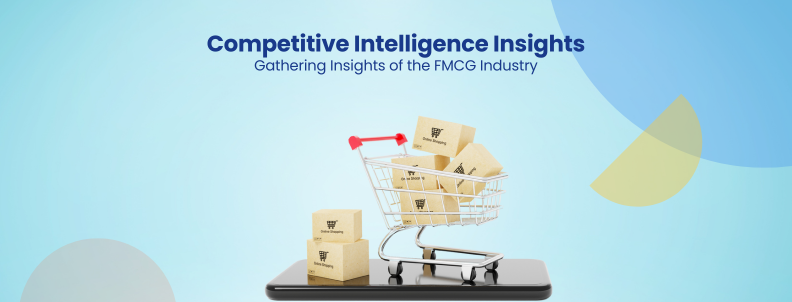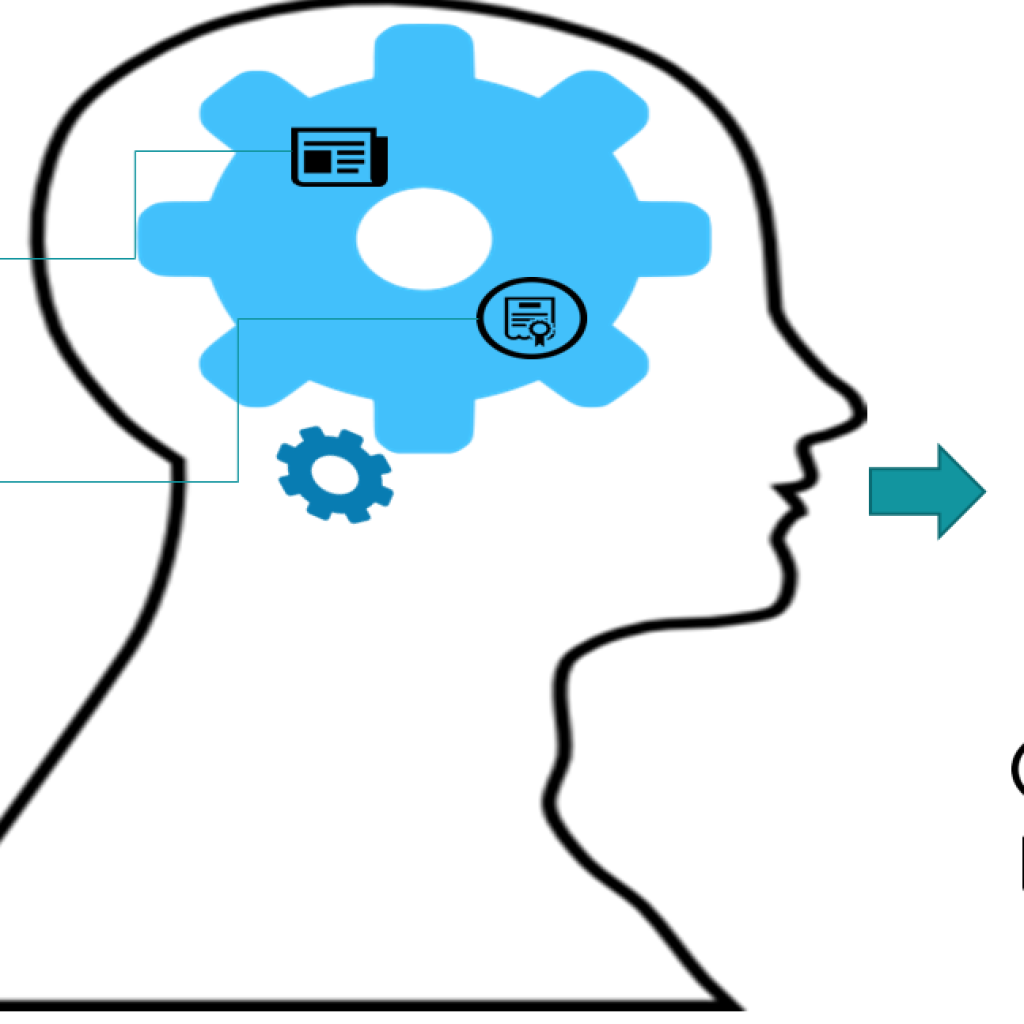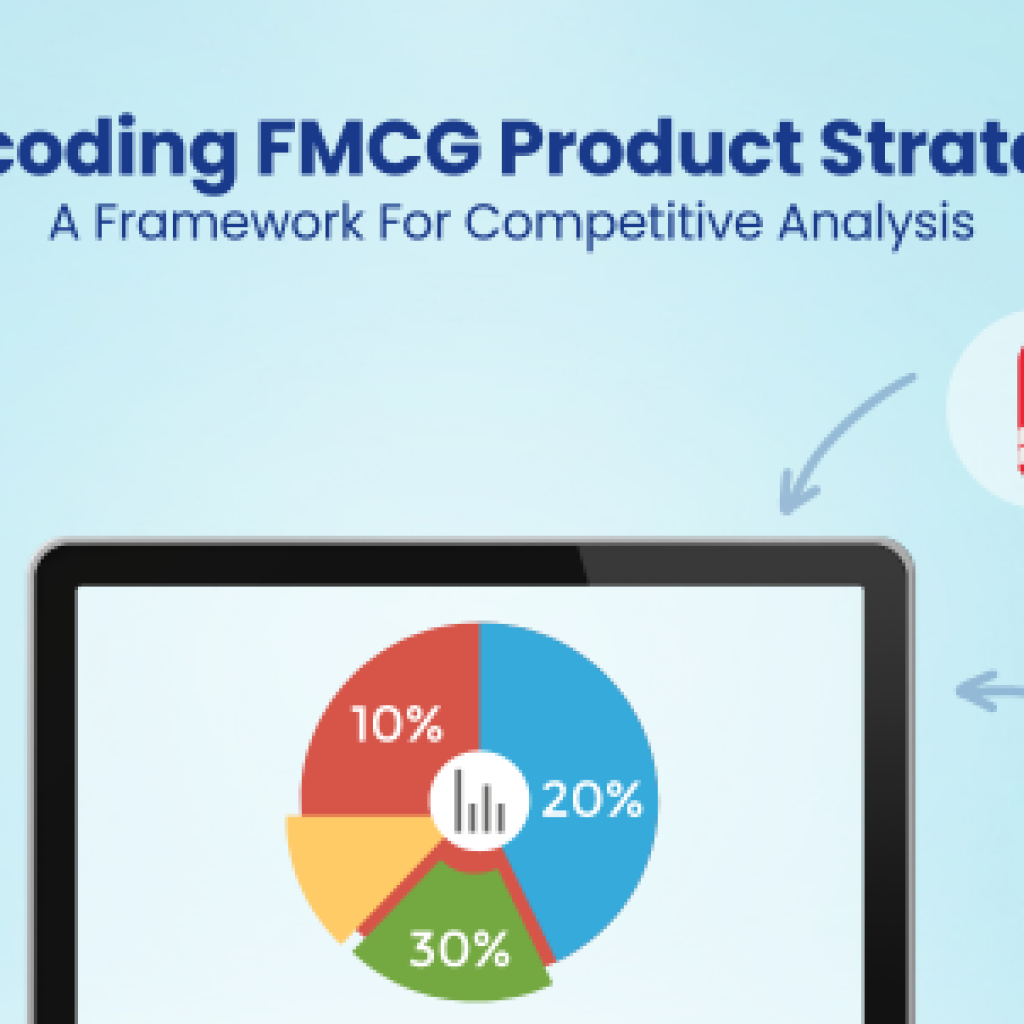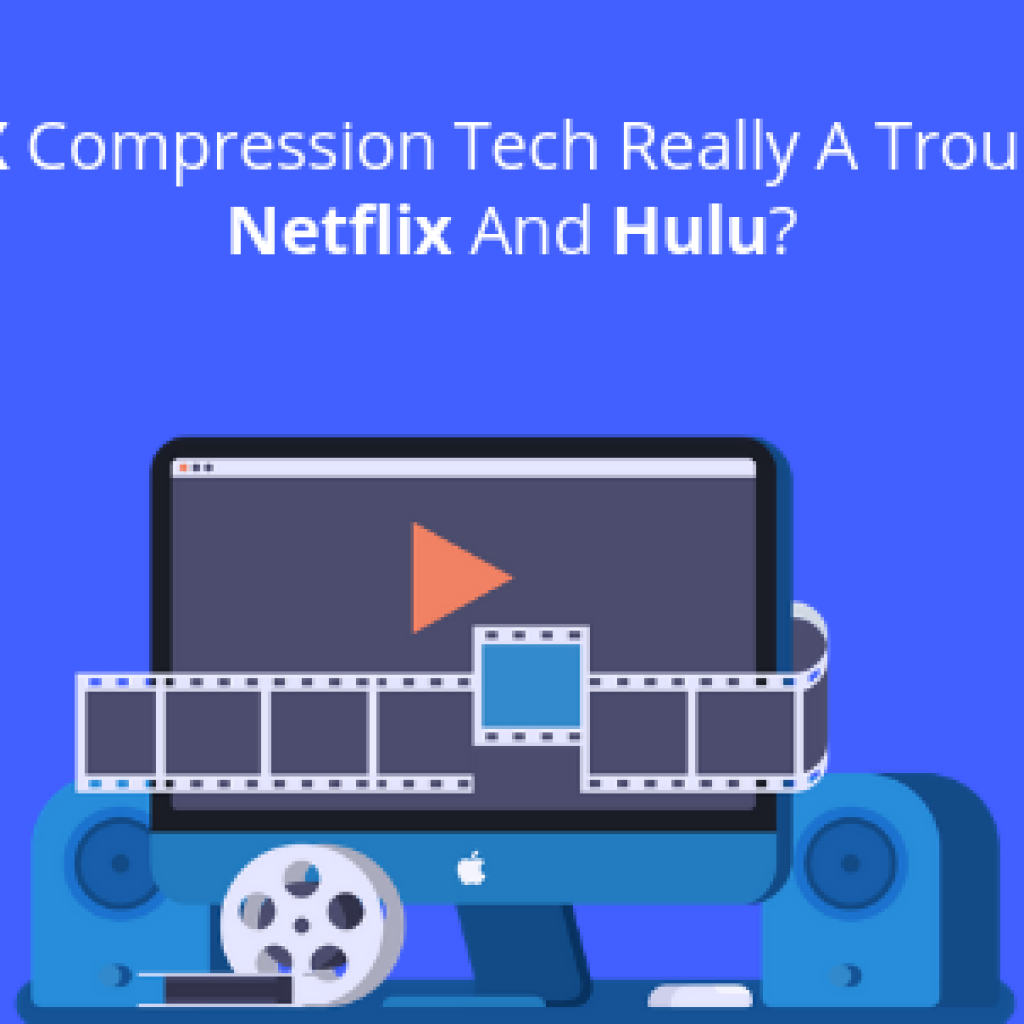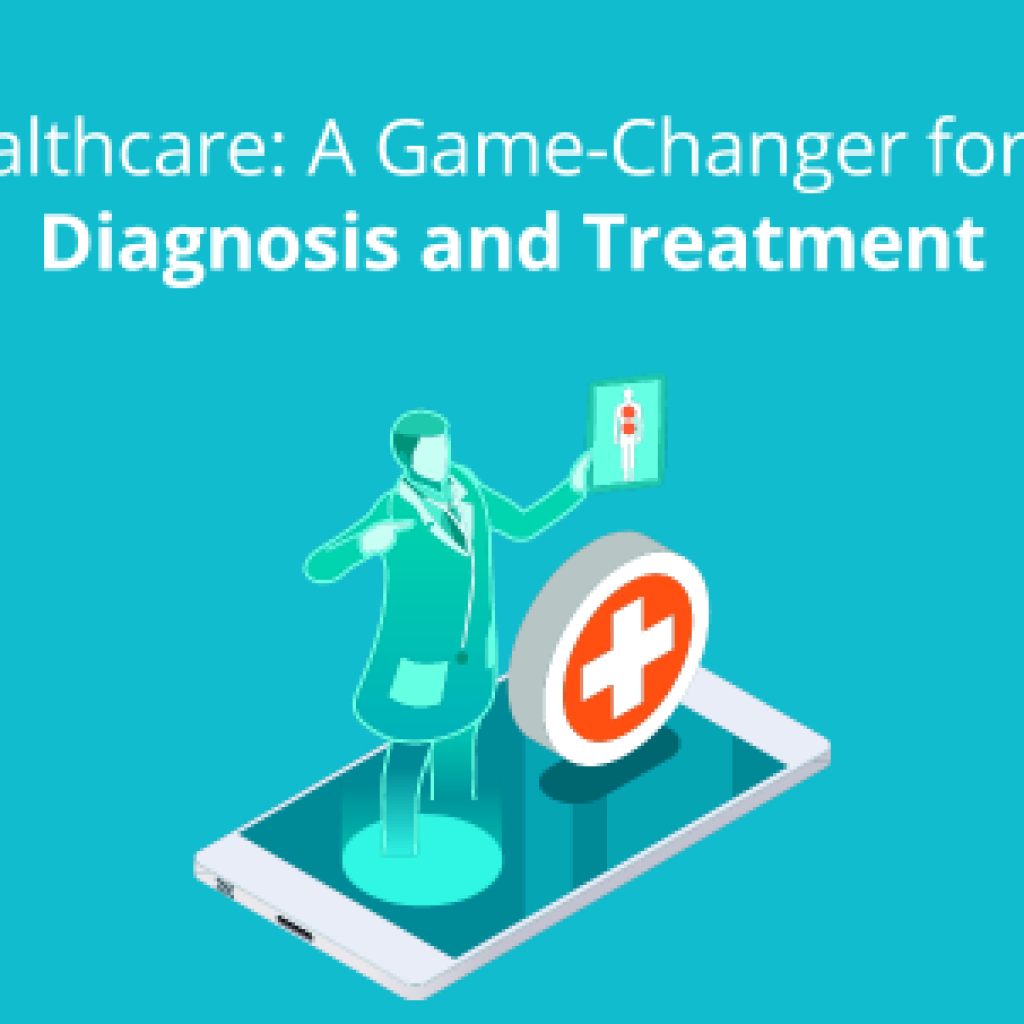Competitive intelligence is a no-skip, especially in a sector like Fast-Moving Consumer Goods (FMCG), where competition is relentless and consumer preferences shift quickly. It’s not just about knowing what’s new in the market; it’s about leading with precise, actionable insights.
Advanced competitive intelligence enables companies to anticipate market trends, decipher competitors’ strategies, and make decisions regarding product development, marketing initiatives, and pricing strategies. Achieving this level of insight necessitates leveraging data from a variety of sources, including comprehensive market reports, social media analytics, customer feedback, and patents.
This article delves into the essential resources and methodologies that can empower you to construct a robust business strategy. As a result, you will be positioned ahead of your competitors in the FMCG industry.
How to Efficiently Gather Intelligence for a Competitive Advantage?
Companies should concentrate on a range of activities to effectively gather competitive intelligence in the FMCG industry. These activities include company profiling, competitive benchmarking, early warning alerts, analysis of market and industry trends, economic and political analysis, and profiling of key executives (Demirçiftçi & Belarmino, 2022).
These activities will help FMCG companies understand market dynamics, consumer preferences, competitor strategies, and external factors influencing the industry. Moreover, optimizing supply chain dynamics and enhancing operational efficiency while prioritizing customer satisfaction will contribute to gaining a competitive edge in the FMCG sector (Olutimehin, 2024).
By leveraging market intelligence, companies gain valuable insights into consumer preferences, emerging trends, and competitive landscapes.
However, scientific foresight requires additional intelligence, which can be obtained by analyzing patents, research papers, conference proceedings, joint development reports, and funded academic research.
By combining these two layers of information, companies will uncover patterns, identify emerging technologies, and anticipate shifts in consumer behavior before they become mainstream. This proactive approach enables businesses to stay ahead of the competition by developing innovative products and services that meet the evolving needs of their target markets.
How does market, social, and scientific intelligence help predict competitors’ next products?
Determining a cosmetic company’s product strategy is difficult, especially in a market like China, where local players dominate in particular product categories.
However, by using different sources of information, one could predict with certain accuracy by finding patterns in companies’ activities.
Let’s look at Winona’s timeline and what the company did in this timeline before or after a product release.
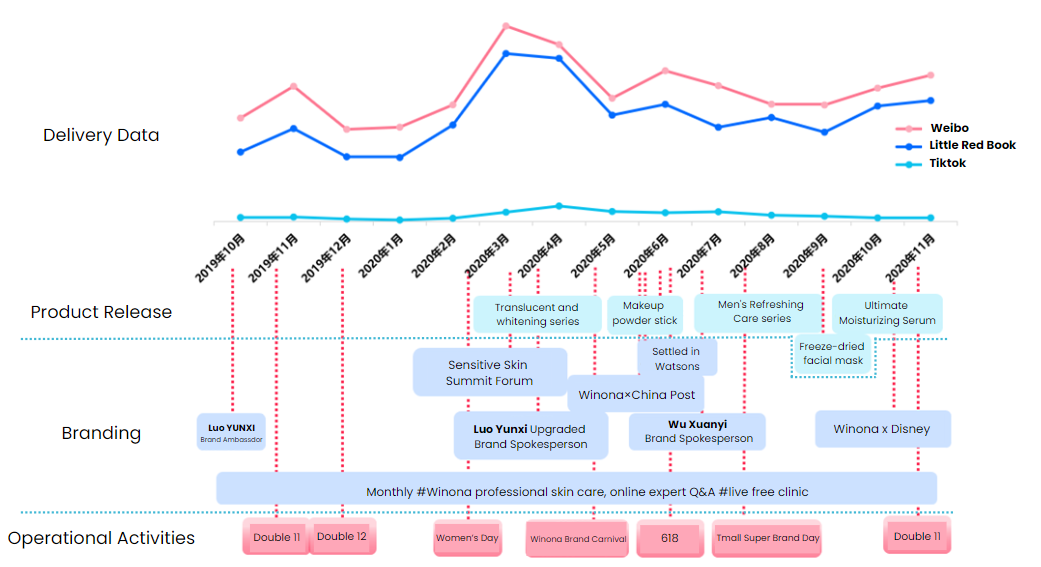
The above image shows how Winona’s branding activities increase before releasing a product. Even social media mentions have grown more than usual.
1. Product Releases and Social Media Buzz:
The timeline shows various product launches, such as the “Translucent and Whitening series,” “Makeup Powder Stick,” “Men’s Refreshing Care series,” and “Ultimate Moisturizing Serum.” These launches are often closely followed by spikes in social media mentions across Weibo, Little Red Book, and TikTok.
For instance, in March 2020, before the release of the “Translucent and Whitening series,” there was a notable increase in mentions on Weibo and Little Red Book.
2. Branding Activities and Social Media Engagement:
Key branding activities, such as collaborations with brand ambassadors like Luo Yunxi and Wu Xuanyi, are highlighted. These endorsements align with increased social media activity, suggesting that these partnerships drive engagement and awareness.
Events like the “Sensitive Skin Summit Forum” and collaborations with entities like China Post are positioned around new product launches or upgrades, potentially to synergize the impact on the audience and maximize media coverage.
3. Operational Activities and Market Response:
Significant dates like “Women’s Day” and shopping events (“Double 11”, “Double 12”, “618”) show corresponding increases in delivery data points shortly after these dates. This suggests successful marketing strategies that capitalize on increased consumer spending during these periods.
“Monthly #Winona professional skin care” and regular online engagements such as Q&A sessions or live clinics are likely methods to maintain ongoing consumer interest and loyalty between major product launches or annual sales events.
4. Overall Trends:
The blue line (Weibo) shows more consistent high activity compared to the pink (Little Red Book) and light blue (TikTok) lines, indicating a possibly more robust or engaging platform for Winona’s target audience.
There is a general trend of increasing delivery data from early 2020 onwards, possibly indicating effective marketing strategies and brand growth.
In conclusion, Winona effectively coordinates product launches with strategic branding activities and harnesses social media platforms to amplify these events, driving engagement and product sales. This integrated approach contributes positively to the company’s visibility and market performance.
If Winona follows similar branding activities, one can predict that the company will launch a new product.
To find the company’s upcoming product, one can look in scientific literature, such as patents or research papers.
Patents serve as a seer when it comes to predicting the next products of an FMCG company.
The recent filings of a company can give you a great insight into what the company has been working on.
The Role of Technology Consulting Firms in Competitive Intelligence Gathering
While scientific foresight is crucial for market leadership, many companies may lack the resources or expertise to conduct comprehensive landscape intelligence studies independently. This is where technology consulting firms help leverage their specialized knowledge and advanced analytical capabilities to support companies in pursuing market dominance.
In-depth landscape intelligence studies will identify and analyze layered information from various sources. These studies will then predict trends and provide valuable insights into emerging technologies, market shifts, and potential disruptions within a specific industry or domain.
Moreover, these firms can provide valuable guidance on interpreting and leveraging the insights gained from landscape intelligence studies. They can assist companies in developing actionable strategies to capitalize on emerging trends, mitigate potential risks, and stay ahead of the competition in highly competitive markets.
Conclusion
Scientific foresight is a critical differentiator for companies seeking to establish and maintain market leadership, particularly in highly competitive domains like FMCG.
Understand consumer preferences, emerging technologies, and industry trends, enabling them to develop innovative products and services that meet the evolving needs of your target markets.
Fill out the form below to combine market and patent analysis for comprehensive competitive intelligence.
How Can We Help You?
We support industry-leading R&D and Innovation professionals through complex problems. Describe your challenge, and let us bring clarity and expertise.

